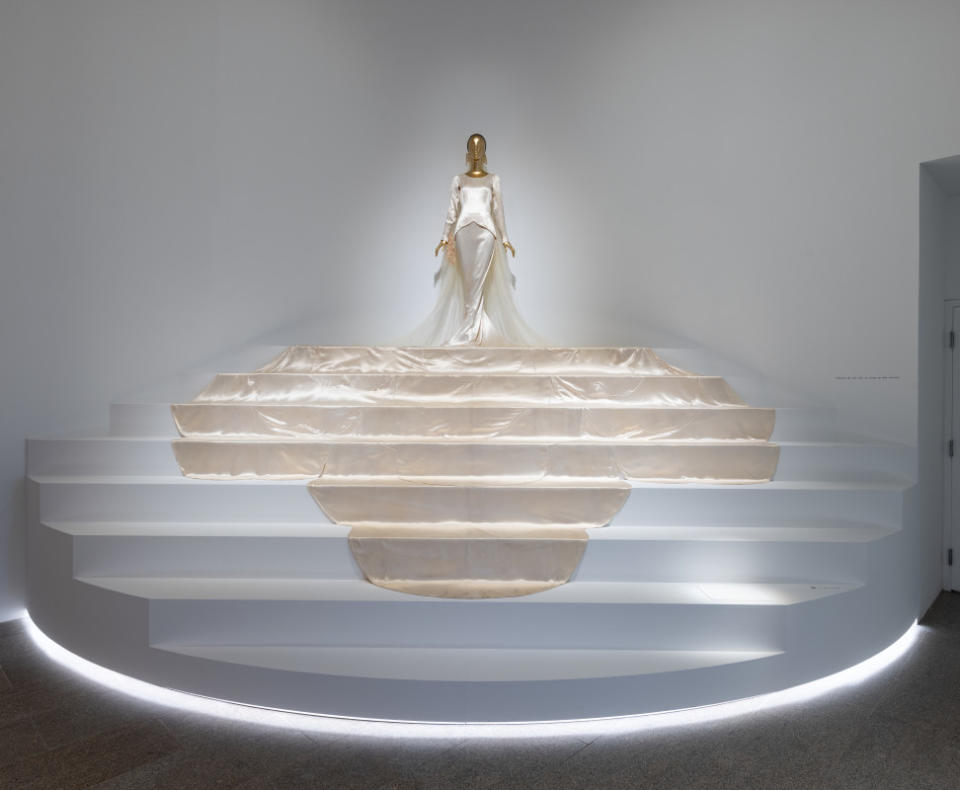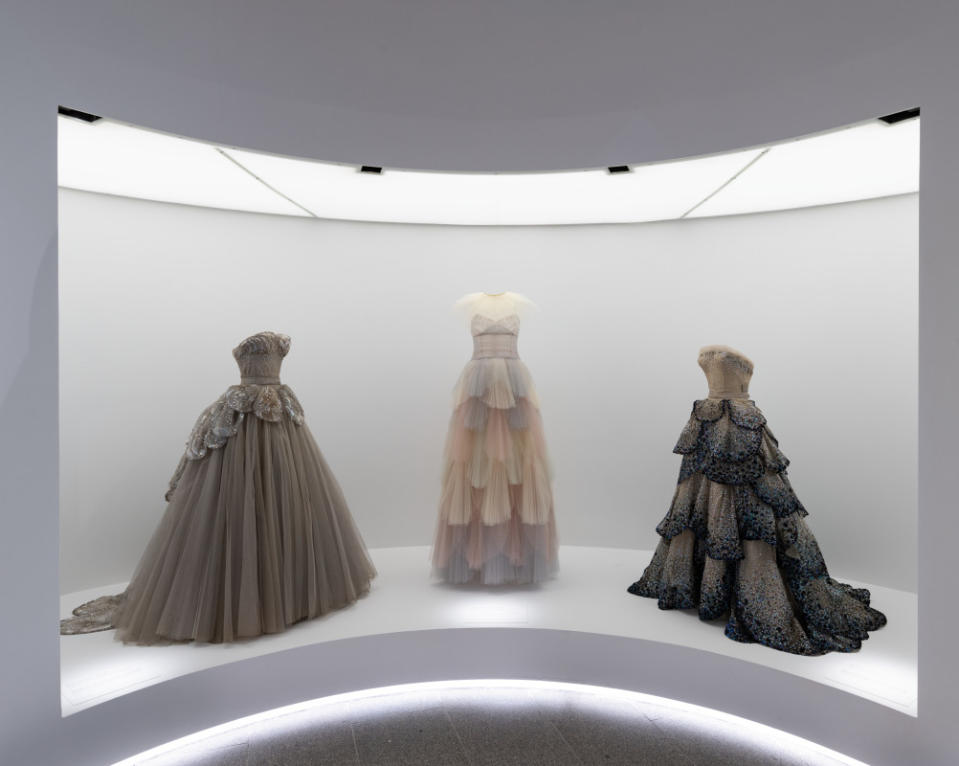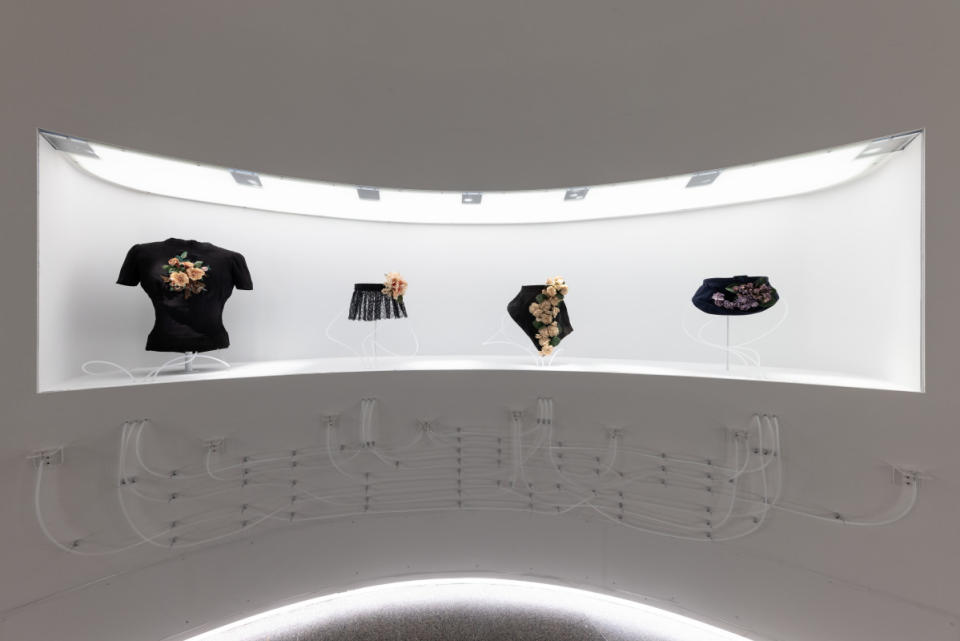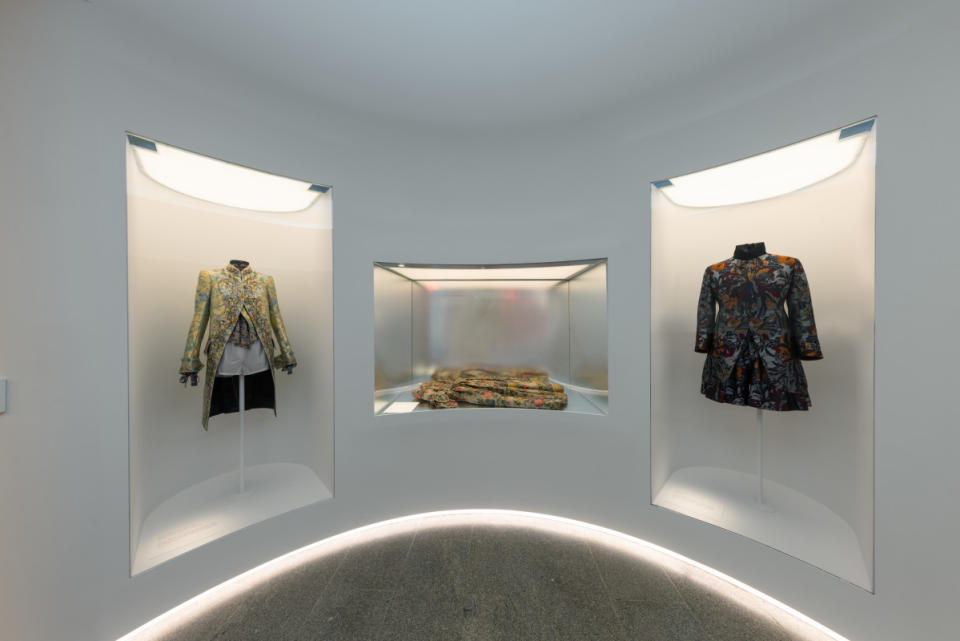'Sleeping Beauties' Proposes a More Human Way of Studying and Preserving Fashion
On Friday, the Metropolitan Museum of Art's Costume Institute opens an ambitious exhibit that goes beyond asking the age-old (tired) question, "Is fashion art?" and instead concerns itself with the ways we could be displaying garments from the past.
"When a garment is brought into the Met's collection, its status does change remarkably. It really becomes more of an object. It becomes a work of art, which is fantastic, because it means you can preserve it forever, so it'll be eternally beautiful and eternally youthful," Curator-in-Charge Andrew Bolton told Fashionista on Monday morning, at a preview of "Sleeping Beauties: Reawakening Fashion," on view at the Met starting May 10. "But you also miss the other senses that are critical to the understanding of fashion. Fashion is a living art form and, to really understand and appreciate it, you need the sense of smell, sense of touch, sense of hearing. That was part of this idea: How can we reawaken garments in the collection, still keeping in mind the ideas of preservation and conservation? How can we also use technology — sometimes really complicated, sometimes really simple — to bring these garments back to life?"
Announced back in November, the exhibit spotlights 220 objects from the museum's permanent collection, many of which have been "reawakened" through sensory touch points: tactile 3D-printed plastic replicas, embroidery-embossed wallpaper, isolated recordings of pieces captured in an anechoic chamber, projections from Nick Knight and SHOWstudio, scratch-and-sniff scents and other smell displays by Sissel Tolaas. There's even an AI component: The Costume Institute set up ChatGPT to allow visitors to "communicate" with socialite Natalie Porter, who wore the Callot Soeurs wedding ensemble that punctuates the show.

Photo: Courtesy of the Metropolitan Museum of Art
As you make your way through the galleries, you'll come across "sleeping beauties," laid down horizontally — not to mimic Princess Aurora, but because they're too fragile to be dressed on mannequins. Each piece on display takes some thematic cue from nature, so the Costume Institute organized them around three categories: earth, air and water. (Ahead of the first Monday in May, The Cut published a report that suggested "Sleeping Beauties" was actually a back-up plan, after the original pitch for a retrospective on the work of John Galliano — the controversial designer who's rumored to be in the midst of a carefully planned comeback campaign — wasn't received well.)
Oftentimes, with the Costume Institute, there are two layers through which you can interpret an exhibition: the literal and the conceptual. There are a few of these at play in "Sleeping Beauties" — firstly, the thematic through-line of nature, which informs how the pieces are grouped together (the literal), and also acts as a metaphor for fashion itself, "in its rebirth, renewal and cyclicity," as the book accompanying the exhibit argues (the conceptual).
The latter speaks to various topics raised throughout the show, like the prevalence of references from the past in contemporary collections (a cloud-and-sunburst-embroidered cape by Alessandro Michele for Gucci shown next to the Charles Frederick Worth ball gown that inspired it; a trio of Junons from different Dior eras displayed together) and the natural decay of clothing (epitomized by the "sleeping beauties," as well as a pair of Charles James "Butterfly" gowns in different conditions).

Photo: Courtesy of the Metropolitan Museum of Art
This, at times, gives the exhibit a morbid undertone, which emerges literally through the olfactory activations in certain rooms, releasing scents that transport you to an estate sale for the recently deceased. Bolton described it as "quite a melancholic show," in the more conceptual sense: "When you think about sleep, you're in between life and death, and I wanted to somehow capture that... There are moments of absolute joy, then you go into the room with birds flocking around you, and you have a sense of fear. Part of it was also to obviously reawaken the senses, but also to emotionally engage with theme, as you do in real life with garments."
What Bolton and his team endeavor to do with "Sleeping Beauties" is reinforce the idea that fashion merits the attention, study and care that other fields of art receive, while simultaneously conveying that the way we study it should be different. It should take into account the subjective human component inherent to clothes: No matter how conceptual or unorthodox, they're meant to be worn by people, designed with a human body in mind — and people will leave their mark on them, whether that's the scent profile of the perfume they spritz or the cigarettes they smoked, or the residue of their natural oils on the textile. This is all as much a part of their story as their origin and their making.

Photo: Courtesy of the Metropolitan Museum of Art
"This exhibition and related catalog are reminders that the featured garments — having passed out of their moments of original and intended use, now destined for an eternal slumber safely within the museum walls — do not 'forget' their sensorial histories," the book reads. "Indeed, these histories are embedded within the very fibers of their being and simply require reactivation through the mind and body, heart and soul of those willing to dream and imagine."
The multi-sensorial experience not only adds a you-had-to-be-there element to "Sleeping Beauties" (how this comes across on TikTok, the embattled main sponsor of the exhibit, will be interesting to see), but it also lifts the veil on what's usually kept behind conservation studios' doors: Visitors get to smell some of what conservators might smell when they're working on a garment or hear what they might hear when they move a piece.
"We have the most amazing conservators, the most amazing collection staff, the most amazing installation staff — and because they're so amazing, their work is almost invisible," Bolton said. "Because the work's so refined and so sophisticated, you're not really aware of what's gone into it. This is very much part of that: spotlighting the people who, behind the scenes, preserve and conserve these garments and allow them to live in posterity."

Photo: Courtesy of the Metropolitan Museum of Art
The exhibit educates visitors on all the different ways we indelibly stamp our clothes and how that, combined with what curators call "inherent vice" (its "built-in destruction," as the book explains), can destine a garment to become a "sleeping beauty." This raises an issue the industry has been wrestling with in recent years, with celebrities breaking out rare vintage to create a red-carpet moment. Ironically, it's really come to a head at the Met Gala in the past, and will likely be a topic of discussion again this year, with the red carpet's "Garden of Time" theme. Bolton's thoughts on this trend are nuanced, if a bit undecided.
"It's hard because, as a curator, you're concerned when you see a 1949 Dior — first of all, because, gosh, I would love that to be in the collection, but it's part of a garment's history," he said. "We have a role to play in the museum, which is to acquire garments and preserve them. People have different expectations of fashion outside of ours. It's a different type of thinking."
However, this idea of turning to what already exists in fashion — as opposed to always pursuing newness — was something Bolton hoped visitors would take away from "Sleeping Beauties."
"I want to encourage people to go back to their own wardrobes, to reawaken their own wardrobes, which is an element of sustainability," he said. "That was very conscious in my mind when I was working on the exhibition, to allow people to rethink what they have in their wardrobes and think about re-wearing it."
"Sleeping Beauties: Reawakening Fashion" will be on view at the Metropolitan Museum of Art in New York from May 10 through Sept. 2, 2024.
Want the latest fashion industry news first? Sign up for our daily newsletter.


